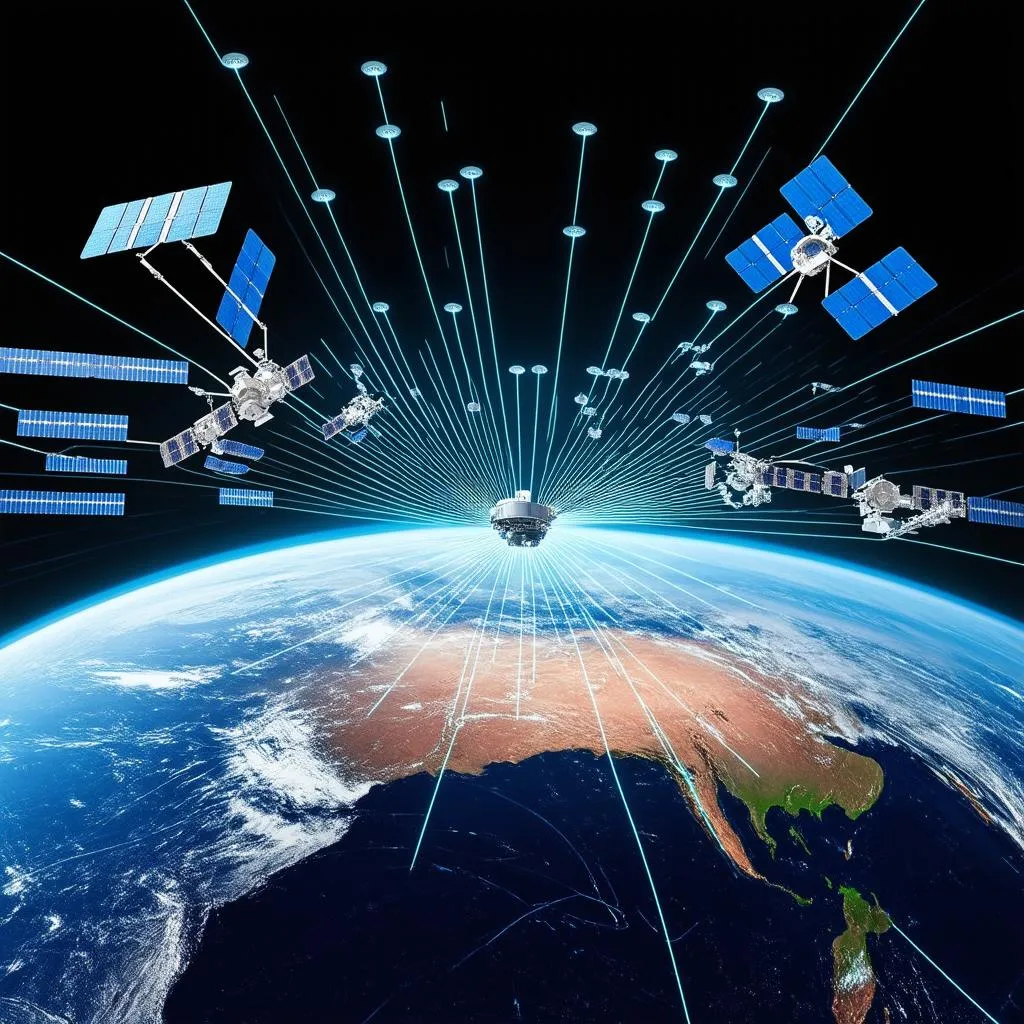Have you ever gazed up at the night sky, awestruck by the twinkling stars scattered across the vast expanse? It makes you wonder, how does their light even reach us after traveling through the seemingly empty vacuum of space? This question has intrigued humanity for centuries, leading to the fascinating discovery of waves that possess the incredible ability to traverse the void.
Unraveling the Mystery: Waves That Defy the Void
Not all waves are created equal. Some require a medium to propagate, while others possess the extraordinary ability to travel through the emptiness of space. Let’s delve into the heart of this phenomenon:
Electromagnetic Waves: The Cosmic Travelers
The starlight that reaches our eyes, the warmth we feel from the sun, and even the radio waves that carry our favorite tunes are all examples of electromagnetic waves. These waves are the true champions of the vacuum, capable of traversing the vast cosmic distances without the need for a physical medium.
But how do they achieve this remarkable feat? Unlike mechanical waves like sound waves, which rely on the vibration of particles to propagate, electromagnetic waves are composed of oscillating electric and magnetic fields that generate each other and travel perpendicular to one another. This self-sustaining mechanism allows them to travel through the vacuum of space at the speed of light, a staggering 299,792,458 meters per second!
Types of Electromagnetic Waves:
- Radio Waves: Used for communication, broadcasting, and even radar systems.
- Microwaves: Employed in microwave ovens, telecommunications, and even in astronomy.
- Infrared Radiation: Responsible for heat, used in thermal imaging and night vision technologies.
- Visible Light: The portion of the electromagnetic spectrum that our eyes can perceive, responsible for the colors we see.
- Ultraviolet Radiation: Emitted by the sun, can cause sunburns but also has applications in sterilization.
- X-rays: Used in medical imaging to visualize bones and internal organs.
- Gamma Rays: The most energetic form of electromagnetic radiation, used in cancer treatment and astronomy.
Sound Waves: Silenced by the Vacuum
Imagine standing on the moon and witnessing a meteoroid crash nearby. Would you hear the deafening roar? Sadly, you wouldn’t. Sound waves, unlike their electromagnetic counterparts, are mechanical waves, meaning they require a medium like air, water, or solids to propagate. In the vacuum of space, where there’s no matter to vibrate, sound waves are rendered mute.
Gravitational Waves: Ripples in Space-Time
In recent years, scientists made a groundbreaking discovery – gravitational waves. Predicted by Einstein’s theory of general relativity, these waves are not vibrations of matter but rather ripples in the very fabric of space-time itself. Generated by cataclysmic cosmic events like colliding black holes or neutron stars, gravitational waves can also traverse the vacuum, offering us a new window into the universe’s most violent phenomena.
 Cosmic Waves
Cosmic Waves
Exploring the Applications of Vacuum-Traveling Waves
The ability of electromagnetic waves to travel through a vacuum has revolutionized our world, enabling a plethora of technologies we rely upon daily:
- Communication: Satellites orbiting Earth rely on radio waves to transmit signals, enabling global communication, television broadcasting, and internet connectivity.
- Astronomy: Telescopes capture electromagnetic radiation from distant stars and galaxies, allowing us to study the universe and unravel its mysteries.
- Medical Imaging: X-rays and other imaging techniques utilize electromagnetic waves to peer inside the human body, aiding in diagnosis and treatment.
- Navigation: GPS systems rely on radio waves from satellites to pinpoint our location with remarkable accuracy.
 Global Communication
Global Communication
Planning Your Next Trip? Consider the Feng Shui of Your Destination
Believe it or not, the principles of Feng Shui, the ancient Chinese practice of harmonizing individuals with their surrounding environment, can influence your travel experiences. Selecting destinations with positive energy flow, incorporating elements of nature into your itinerary, and choosing accommodations with auspicious layouts can contribute to a more balanced and fulfilling journey.
For instance, if you’re seeking adventure and new experiences, consider visiting a location renowned for its vibrant energy, like Rio de Janeiro with its pulsating rhythm and colorful culture. If tranquility and relaxation are your goals, opt for a serene destination like Kyoto, Japan, famed for its tranquil gardens and ancient temples.
TravelCar.edu.vn offers a wealth of information on destinations worldwide, helping you plan a trip that aligns with your travel aspirations and personal energy. Explore our articles on “Can Light Waves Travel Through a Vacuum?” and “Can Sound Travel Through a Vacuum?” to further delve into the fascinating science behind our universe.
Conclusion:
The ability of certain waves, particularly electromagnetic and gravitational waves, to travel through the vacuum of space has profound implications for our understanding of the universe and our ability to interact with it. From the light from distant stars that reaches our eyes to the technology we rely upon daily, the impact of these vacuum-defying waves is omnipresent. As we continue to explore the cosmos and unravel its secrets, our understanding of these extraordinary waves will undoubtedly continue to evolve.